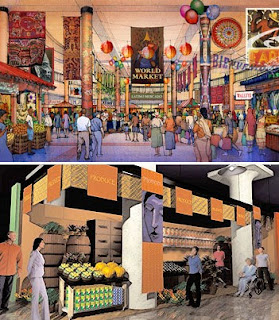Professional nativist Lou Dobbs is famous for making outlandish claims regarding immigrants. Perhaps his most famous whopper was his claim that immigrants were responsible for 7,000 cases of leprosy in the preceding three years. In fact, the actual number was 7,000 cases of leprosy in the last thirty years. As well, Dobbs stated that a third of all prisoners were “illegal aliens.” The Justice Department correctly notes that only 6% of the federal prison population are non-citizens (many of them incarcerated for immigration related offenses). What Dobbs and others of his ilk are promoting is a hate agenda that seeks to demonize immigrants – especially undocumented workers. The reason Dobbs and the nativist fringe are able to peddle such lies is that they play to the prejudices of a portion of the
Speaking from personal experience I reside in a community that is rich with immigrants and diversity. I can cross the street and buy fresh fruits and vegetables at the Korean vegetable stand. They cater to a Latin American clientele and will stock prickly pair cactus – the juicy fruit of my youth. Around the corner is a Halaal market whose proprietors are from

This community was not always wonderful. A decade ago, it would have been foolish to walk alone at night. The streets were the domain of drunks, thieves, prostitutes and drug addicts. As immigrants have arrived the area has become safer and more vital economically. Where once bars, porn shops and pawn shops predominated now we have markets, computer repair stores, restaurants, video stores and cafes. Most of these businesses have been opened by recent immigrants from
Immigrant entrepreneurs are playing a similar role in revitalizing cities around the country
There are no lepers in this community and very few of the criminals arrested are immigrants. Around the corner from me is a small store-front mosque where immigrants from the horn of
Immigrant-owned businesses … run the gamut from professional services to high-growth technology companies
The nativist mind-set will not process this information as proof that immigrants are a force for good. They will retort that these immigrants – whether documented or undocumented – are stealing jobs from native-born Americans. Never mind that the immigrants have taken over dilapidated buildings and converted them into vital businesses. If the immigrant thrives he is stealing native bread. If the immigrant fails he is a drag on society. Yet none of these businesses would exist were it not for the entrepreneurial actions of the new-comers. In the nativist mind, bigotry rules and judgment and reason give way to hatred.
 This revitalization phenomenon is not unique to this community. In
This revitalization phenomenon is not unique to this community. In
Reviving
http://americancity.org/article.php?id_article=213
http://deboramaskitchen.blogspot.com/2005/05/mercado-central-in-south-minneapolis.html
The change wrought by these immigrant entrepreneurs is here described by Reese Fayde:
On a Saturday in early June, more than 10,000
The tower is the city’s largest building, originally built in the 1920s. It stood empty for a decade, after Sears closed its
Immigrant entrepreneurs are playing a similar role in revitalizing cities around the country. Immigrant-owned businesses still include traditional restaurants and groceries like Manny’s Tortas. But they also run the gamut from professional services to high-growth technology companies. As Mayor Michael Bloomberg quipped in recent Congressional testimony on immigration, it is “pure fantasy” to imagine life in a major city without immigrants. According to Michael Porter, chairman of the Boston-based Initiative for a Competitive Inner City, they change the face of entrepreneurship in inner cities, providing “a much-needed shot of economic vibrancy to distressed neighborhoods.” And yet few urban communities have actively sought and supported immigrant entrepreneurs as a revitalization tactic.
Minneapolis, however, is a remarkable example of a city that has not only taken steps to incubate immigrant-owned businesses, but has also taken a more holistic approach to reviving areas like the Lake Street corridor, integrating the work of private foundations and community organizations to increase public transportation, expand affordable housing options, improve public education, and expand civic engagement. While Latino immigrants have paved the way for improvements in places like Mercado Central and Plaza Verde, Hmong (Laos), Somali and Oromo (Ethiopia and, to a lesser extent, Kenya) immigrants have started their own companies, further cementing the unique economic, social and cultural role of immigrant entrepreneurs in the revitalization of Midtown Minneapolis.
Reviving
http://americancity.org/article.php?id_article=213

In my community most of the revitalization has taken place by immigrants with little or no support from non-profits or governmental agencies. This experience is consistent with the fact that creative class cities – places of tolerance – are the ones to benefit from this immigrant revitalization. So while nativists peddle hate, good people are building communities, raising families, attending church and bringing life to once moribund areas. Immigrants have always played this role and in the mythology of our country we celebrate them. It’s time to stop the nativist claptrap and speak the reality that immigrants are a vital and positive force in our country.
get my posts delivered to your inbox directly, by subscribing to my feeds by email.


















No comments:
Post a Comment